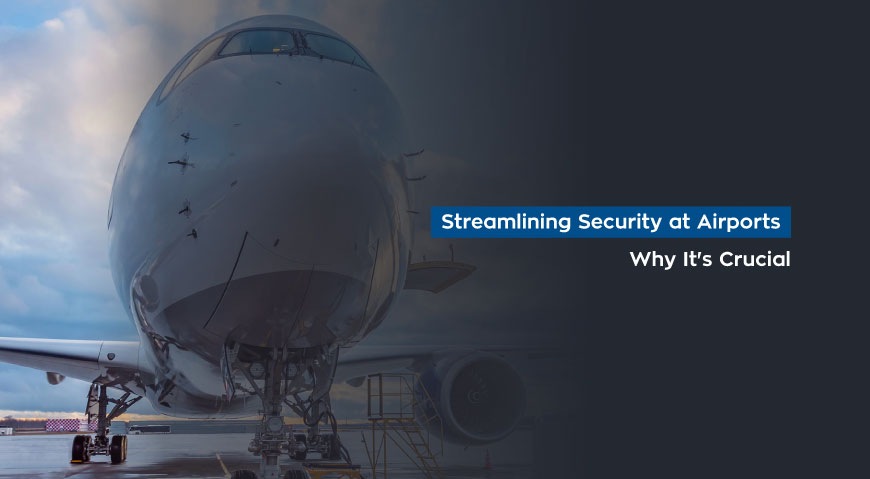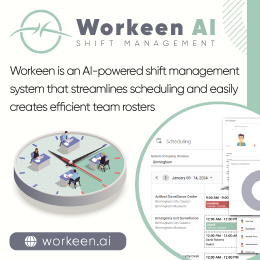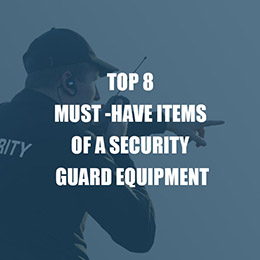- Posted by: blignos
- Published: 25-09-2023
- Category: Latest news
Streamlining Security at Airports: Why It's Crucial
Airports are bursting hubs of activity, and ensuring the safety and security of passengers, employees, and assets is paramount. However, managing security in an airport environment often involves multiple security service providers operating in silos. This article highlights the critical need for streamlining security processes at airports through the adoption of cloud-based patrol management tools that combine and centralize data, fostering collaboration among various security entities.
The Unique Challenge of Airport Security
Airports are complex environments that require coordinated efforts among various security providers. However, these providers often operate independently, leading to several operational challenges:
- 1 Fragmented Communication: Rapid communication and information flow are vital in airport security. The lack of integration can hinder swift, coordinated responses to security threats and emergencies.
- 2 Siloed Data: Each security provider often maintains separate data and reporting systems, making it difficult to establish a unified and comprehensive security overview.
- 3 Resource Duplication: Inefficiencies abound when security providers work in isolation, often leading to redundant resource allocations, such as personnel, equipment, and technology.
The Airport Imperative for Cloud-Based Integration
The adoption of cloud-based patrol management tools that consolidate and centralize data offers a game-changing solution to the challenges faced by airport security:
- 1 Enhanced Airport Security: Unified cloud-based tools enable real-time data sharing, enhancing situational awareness and enabling faster responses to potential threats, ultimately enhancing airport security.
- 2 Streamlined Resource Management: These tools optimize resource allocation, reducing costs and enhancing operational efficiency while maintaining a high level of security.
- 3 Standardized Protocols: Integration encourages the development of standardized procedures, simplifying personnel training and ensuring consistent security measures across the airport.
- 4 Data-Driven Decision-Making: Cloud-based systems provide valuable data for analysis, allowing security professionals to identify trends, vulnerabilities, and areas for improvement in airport security.
- 5 Seamless Collaboration: The centralization of data and workflows facilitates seamless collaboration among various security entities at the airport, ensuring a coordinated response to security incidents.
Charting the Path Forward for Airport Security
To address these challenges and harness the benefits of cloud-based integration, airport authorities, security providers, and management must take proactive steps:
 Invest in cloud-based patrol management tools that streamline security data and processes, fostering collaboration among various airport security providers.
Invest in cloud-based patrol management tools that streamline security data and processes, fostering collaboration among various airport security providers. Foster cooperation and information sharing among airport security entities, ensuring a holistic approach to airport security.
Foster cooperation and information sharing among airport security entities, ensuring a holistic approach to airport security. Ensure compatibility between security technologies to enable seamless communication and data sharing across airport security platforms.
Ensure compatibility between security technologies to enable seamless communication and data sharing across airport security platforms. Implement specialized training programs that instill a culture of collaboration and integration among airport security personnel.
Implement specialized training programs that instill a culture of collaboration and integration among airport security personnel.
In conclusion, airport security is a critical aspect of the aviation industry, and the adoption of cloud-based patrol management tools that consolidate and centralize data is essential for the safety and security of airports. By embracing these tools and fostering collaboration among security providers, airport authorities and management can enhance safety, operational efficiency, and the overall passenger experience, solidifying airports' commitment to secure and efficient air travel.
Written by Maria-Christina Antoniou






















